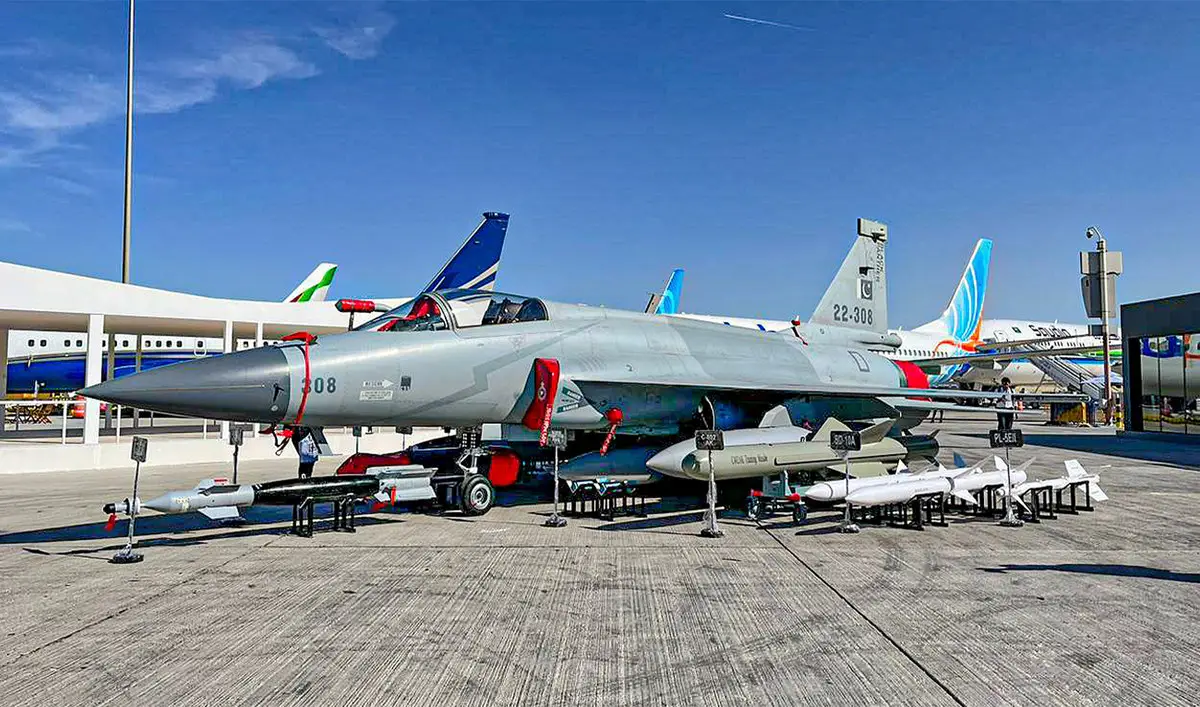The Pakistan Air Force (PAF) has initiated the induction of the latest iteration of the Pakistan Aeronautical Complex (PAC)/Chengdu Aircraft Corporation (CAC) JF-17 ‘Thunder’ fighter aircraft. Janes reported that the rollout of the Block III version marks a significant leap forward in Pakistan’s defense capabilities, equipped with an array of advancements elevating its combat prowess. Mid-November witnessed the official announcement from the PAF, outlining the manifold improvements brought forth by the Block III variant over its predecessor, the Block II. Highlighting superior maneuverability, extended range, and heightened combat capabilities, the upgraded JF-17 aims to establish itself as a frontrunner in modern aerial warfare. Integral to this enhancement is the substantial reduction in radar cross-section, achieved through increased utilization of composite materials and augmented avionics. Notably, state-run broadcaster China Central Television (CCTV) reported in September that the aircraft now boasts an active electronically scanned array (AESA) radar, a critical addition amplifying its detection and targeting capabilities.
Specifically, the radar system is believed to be the Nanjing Research Institute of Electronics Technology (NRIET) KLJ-7A X-band airborne 3D fire-control radar (FCR), a significant upgrade from the KLJ-7 V2 featured in the previous iteration. According to the US Department of Defense (DoD), the enhanced radar system substantially expands the aircraft’s detection range and multitargeting capabilities, presenting increased resilience to jamming—an invaluable asset in modern conflict scenarios. The unveiling of the initial JF-17 Block III aircraft (serial no 22-305) during the Pakistan Day military parade in Islamabad marked a symbolic milestone, showcasing the nation’s commitment to technological advancements in defense. However, the absence of squadron insignia indicated its preliminary stage in the induction process.

The JF-17 Thunder, recognized as the backbone of the PAF, signifies a collaborative effort between the Chengdu Aircraft Corporation of China and the Pakistan Aeronautical Complex. Designed to replace several existing combat aircraft in the PAF arsenal, the JF-17 serves multiple roles, ranging from interception to ground attack, anti-ship missions, and aerial reconnaissance. Its versatility in deploying various ordnance, including missiles and bombs, coupled with a formidable 23 mm twin-barrel autocannon, underscores its adaptability in diverse operational scenarios. The aircraft’s cost-effectiveness, at nearly half the expense of its counterpart, the Lockheed Martin F-16 Fighting Falcon, further solidifies its position as a cornerstone of the PAF fleet.
A key aspect of the JF-17’s production lies in the collaboration between Pakistan and China, with a significant portion of the airframe being manufactured locally. The collaborative effort has resulted in Pakistan assuming 58% of the airframe production, further strengthening the nation’s aerospace capabilities. As the Block III variant enters serial production, featuring cutting-edge enhancements like the AESA radar, a more powerful Russian engine, advanced display systems, and expanded weaponry, it underlines Pakistan’s commitment to continually modernize its defense infrastructure. The incorporation of such advancements signifies a strategic shift towards ensuring a robust and technologically superior defense apparatus, cementing Pakistan’s stance as a formidable force in the global defense landscape.
















